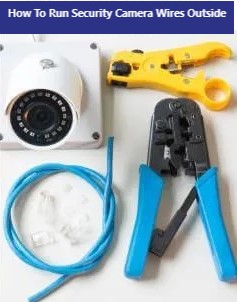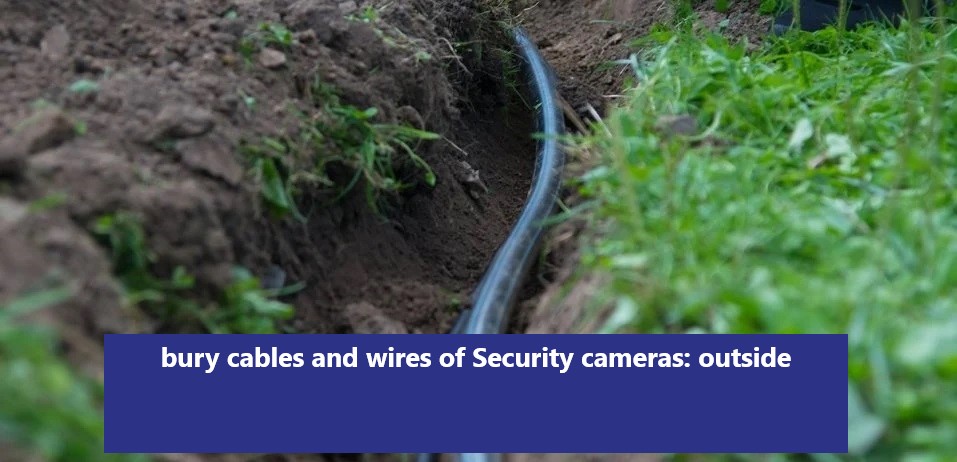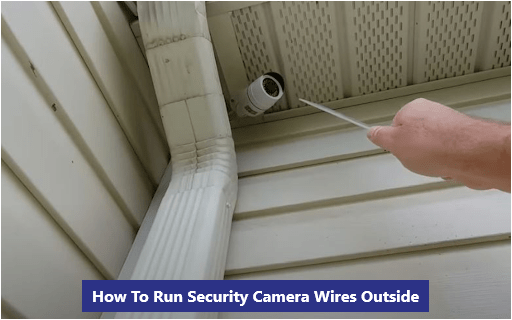POE and wireless security camera wiring are the two methods for installing security camera wiring. This article provides a comprehensive installation guide that will lead you through the process of installing security camera wiring for both indoor and outdoor use. Installing a security camera is a quick and easy way to protect your front and back doors, reception area, front and backyard, shop floor, bedroom, garage, warehouse, basement, parking lot, farm, entrance, and even upstairs.
The Essential Tools That You Need To Run Security Camera Wires Outside and Inside
Before running security camera wiring outdoors or indoors, make sure you have the following tools ready.
1. Tools For Wireless Security Camera
- Electrical Wires
- Security Camera Wire Extension
- Fish Tape
- Drill Machine
2. Tools For PoE Security Camera
- PoE Injectors
- Cat 5/6 security camera wires
- Drill Machine
- Fish Tape
3. Tools For Analog Security Camera
- BNC barrel
- Wire cutter
- Standard wire crimp tool
- Electrical tape
- RG-59 BNC connectors
- RG-59 crimping tool
- RG-59 stripping tool
- RG-59/syv-75-5 coaxial wires

The Steps To Run Security Camera Wires Outside
You can bury the security camera wires to prevent them from being tempered when running them outside, especially if you have planned to run the wires throughout your home and long-distance.
Lay out the path for the security camera wire. To make the burying process easier, find a short and straightforward route for your conduits. To prevent animals, such as squirrels (see this post to discover how to get rid of them), birds, and others from tampering with the home security camera wiring, use wire guards or PVC or metal conduits.
Since PoE cabling can supply your PoE security cameras with both an electric power source and a data connection, all you need to do is use a CAT5/6 cable if you need to power your camera outside. All that is required to use wireless security cameras is to run cables to the power outlet. (The outlet needs to withstand weather and be watertight.)
Note: Mark the location of the hole that you wish to cut.
Drill a hole so that wiring from your home may be run for security cameras. After making the hole in the wall, drill through it with a drill bit so that wires can pass through. When boring huge holes, remember to use a right-angle drill bit with a hole saw bit. Maintain the center of the holes on the studs. It is far simpler to drill a hole in a wall than a floor. Drill slowly, and don’t apply too much pressure. When you feel the drill piercing the wall, stop.
Bury Cables and Wires
Bury network cables and electrical wires. The National Electric Code states that you must bury PVC conduit at least 18 inches and metal conduit at least 6 inches before running cables for your security cameras (NEC).
Holes have now been completed. Next are the cables to be run. When you use a pull wire or fish tape to secure the wires, fishing them is rather simple. Twist the end of the bare wire around itself after passing it through the fish tape eye. Cover the end of the fish tape eye and wire with the electrical tape. You are now prepared to pull wires.

Do Not Forget To
Pull the wiring for the security cameras. Pull uniformly on each wire as one person stands to feed the wires. Maintain the cables’ neatness. Regarding the individual tugging the wires at the other end, draw them gradually, say every two to three feet. Pulling too quickly could cause your partner’s fingers to get caught in the cables.
The Steps To Run Security Camera Wires Inside
The setup procedure is easy if you place a security camera on the brick outside your home, such as by running security camera wires to the hardboard.
- Select the location of the camera.
- Drill a hole from the camera’s location to the router or NVR. (For PoE camera cabling)
- To run power cables for wireless security cameras outdoors, all you have to do is drill a hole.
- As was already said, wire guards allow you to conceal the security camera wires.
PRO Tip From The Team of HomeisParadise
Use waterproof materials, such as duct seal and silicone, to fill the opening. To hide the holes, install feed-through bushings or weatherproof outside coverings.

FAQs
How Long Can I Run Security Camera Wires?
To prevent exterior cameras from being damaged or taken by burglars, install a security camera wire cage after the cables have been routed outside.

